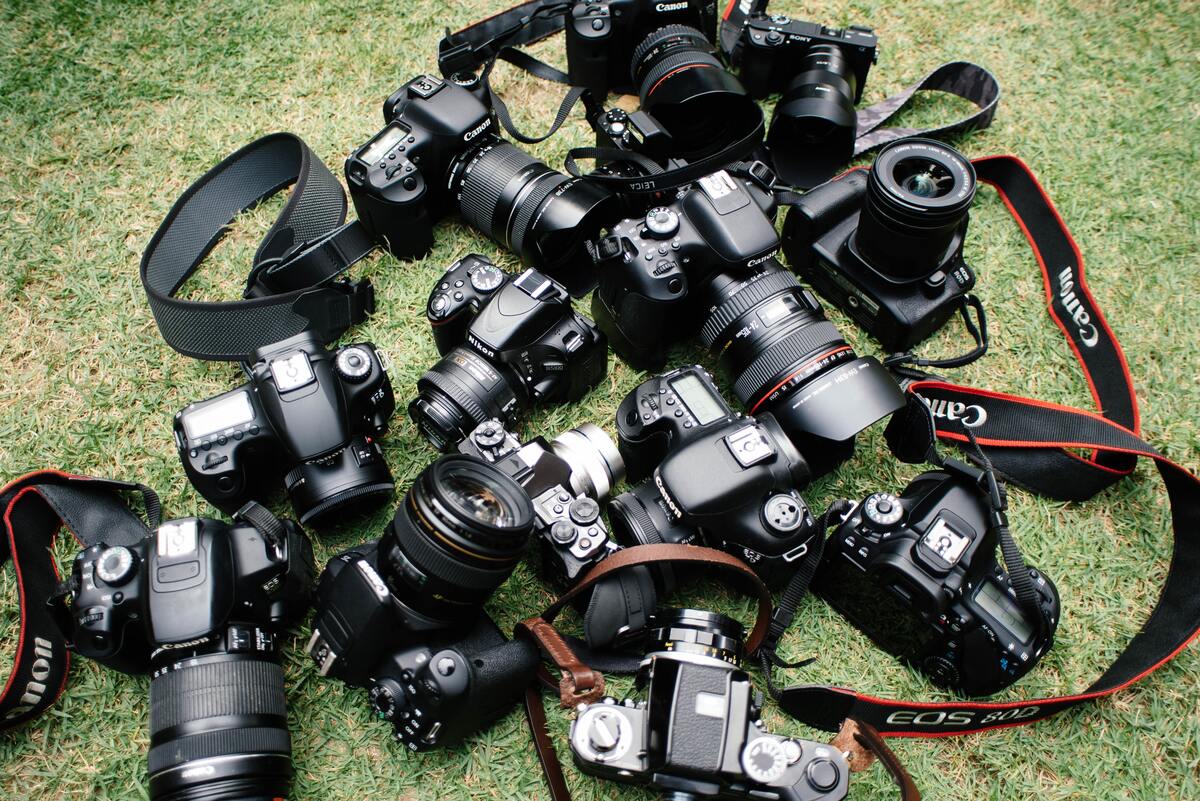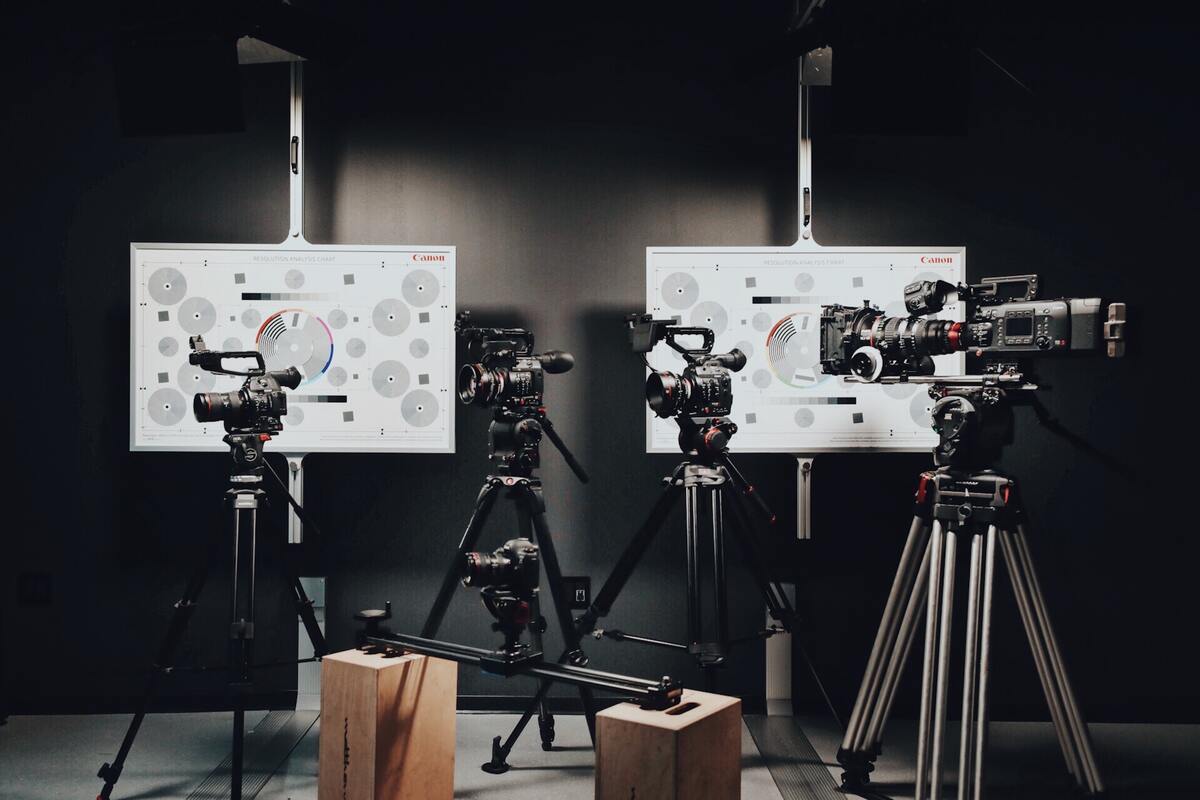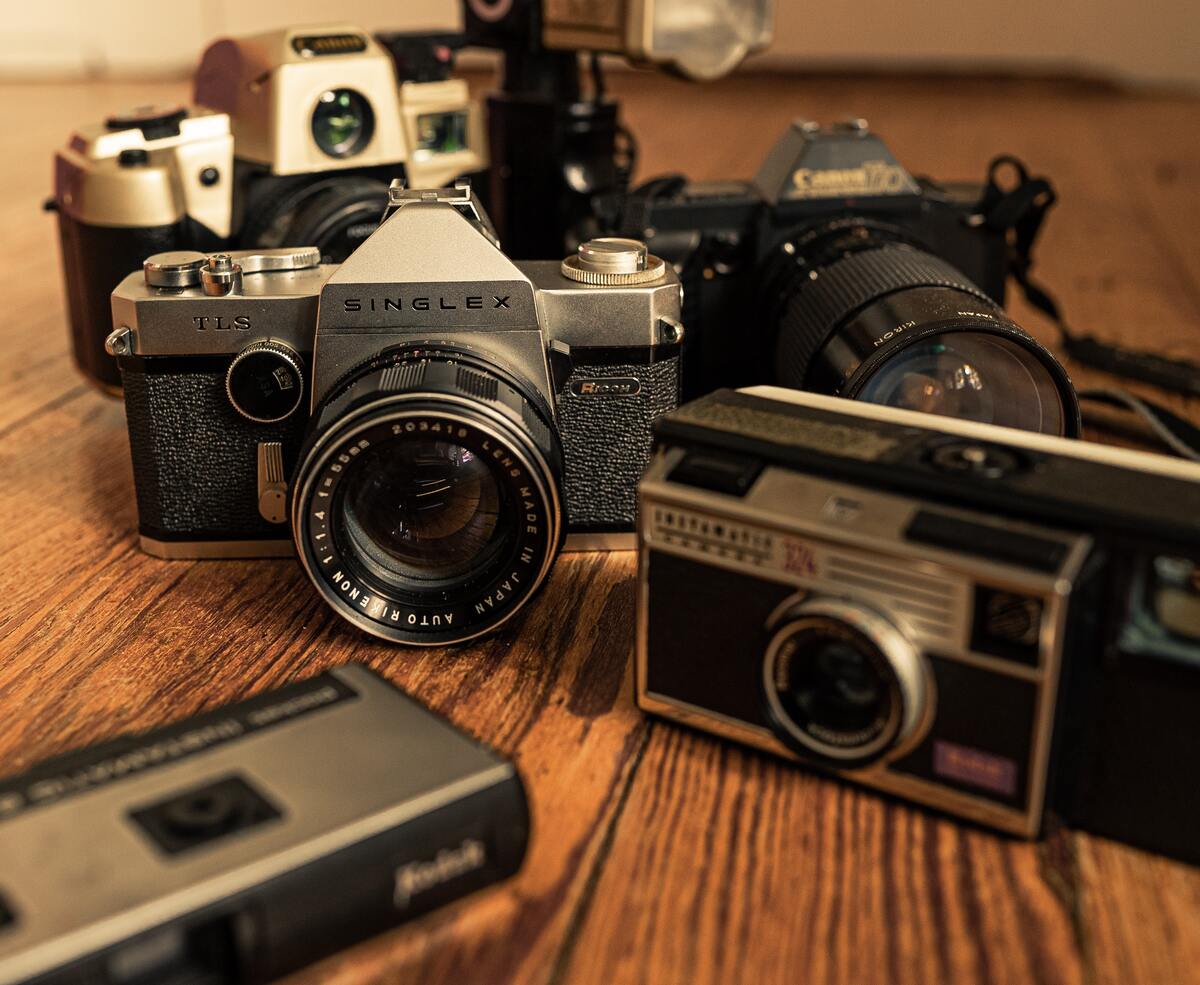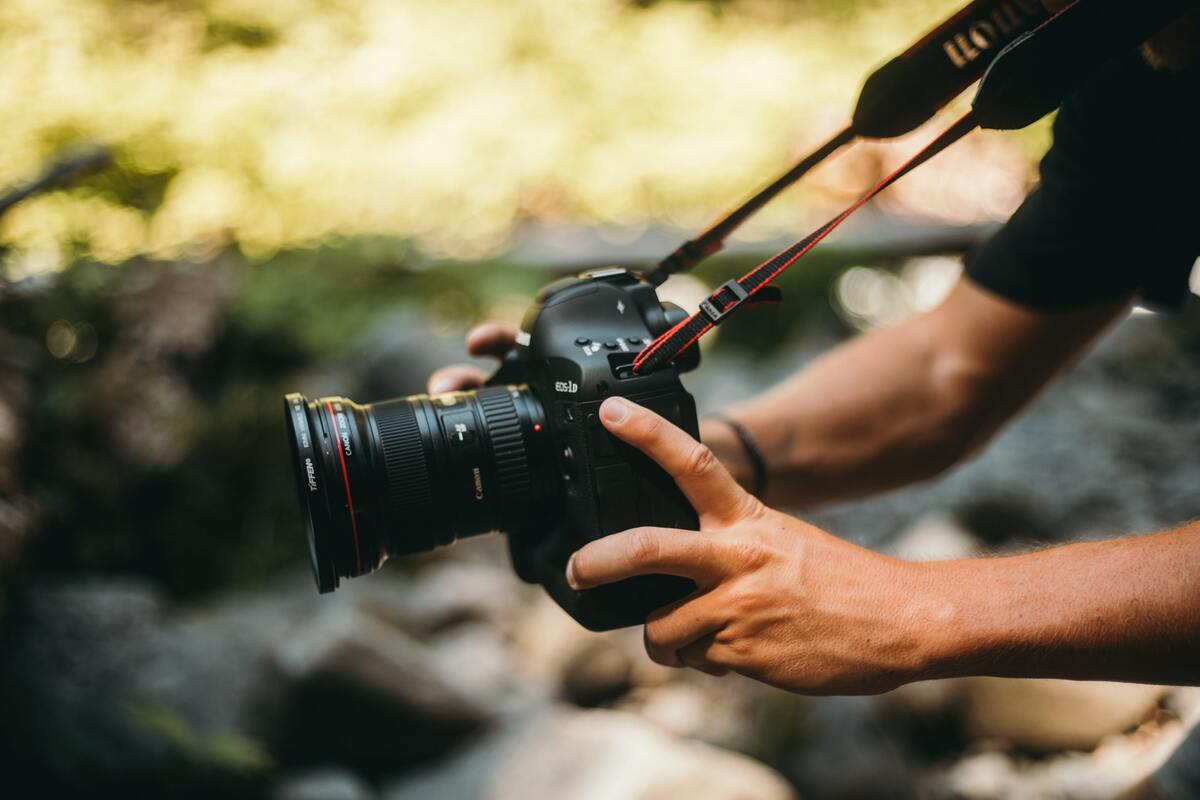How do Cameras Work? Get a Full Rundown of All the Components
Rent film gear from local filmmakers.

Rent film gear from local filmmakers.
Have you found yourself wondering: How do cameras work? You're not alone.
While the technology's been around since 1816 and didn't change drastically since many pros still don't understand what goes on inside their equipment.
Let's change that!
Read about how a camera works and get great beginners' tips on how to use one in practice.
Interested in more gear? Learn all you need to know about camera equipment.

How a camera works: The basics explained
All cameras, regardless of price or brand, work based on the same principle.
From SLRs to compacts across the globe, light is reflected from a subject and then goes into a camera where a recording medium like film registers it.
Read on to learn about the mechanics to find out how cameras work.
Recording light
At the most basic level, cameras collect and capture light rays. This principle was applied from early historic contributions to modern cameras in 2023.
How do cameras record light?
What parts do you need to know to understand the process?
Aperture
The aperture or diaphragm is the opening that lets in light to hit the film or sensor.
The greater the aperture, the more light can pass through. This generally brightens the photo.
Think of it like your pupil dilating in the dark to allow in more light. A larger aperture also lets photographers capture a shallow depth of field, "effortlessly" directing the viewer's focus to their subject.
Most modern cameras let you control the aperture within a predetermined range.
Aperture is measured in f-stops. The f-stop is the ratio of the focal length to the diameter of the lens's iris. The most common values range from f/1.4 to f/22.
Due to the formula, these f-stop values can be deceiving. Remember that the bigger the number after f/, the smaller the opening.
Shutter
The shutter is the barrier blocking the light when not taking pictures. Most modern cameras come equipped with either a rolling shutter or a global one. Pick the best one for your purpose here!
When you press the shutter release, these "curtains" slide open to expose the sensor to light.
How long the shutter opens up for exposure also affects the amount of light hitting the sensor.
Shutter speed is measured in 1/100 seconds usually. Fast shutter speeds like 1/800s freeze movement are well-suited for action and sports photography.
Slow speeds like 1/10s create a motion blur often desired with astrophotography.

ISO
Different sensors and films have different native light sensitivity. This attribute called ISO is measured in numbers.
The standard ISO values range from about 100 to at least 3200. Higher values mean higher sensitivity, which results in a brighter image.
It might be time to boost your ISO if you're shooting outside at night or at a poorly lit venue. However, remember that the higher the ISO, the more likely you'll need to deal with noise.
Grain in photos can be barely noticeable or downright ruin the experience. Newer sensors deal with noise better, but it always comes down to the individual settings and your camera.
Looking to explore new cameras? Rent a camera to experiment with the gear of your dreams.
Lens
The lens or optic of a camera allows light to travel through. There are dozens and dozens of diverse lenses available on the market today.
They are all made up of several lens groups between the front and rear elements that affect the light traveling through. These bend the light for a focused image.
The focal length refers to the distance between the point where the light rays first enter the lens and the camera sensor. Lenses with different focal lengths don't only appear visually different. They also affect the field of view and perceived distance to the subject.
Prime lenses have a fixed focal length, while zoom lenses allow adjustments. Lens quality also impacts how the final photos turn out.
Looking to upgrade your gear? Rent a camera or lens at Wedio to explore new camera equipment.
Once the light enters the lens at an angle, it bends in a single direction. The rays are redirected to and converged at the sensor in most lenses.

Film and digital sensors
There would be no photos without a recording medium like analog film or a digital sensor.
You could set up your shoot, master composition, work for hours, and walk away with 0 pictures if it wasn't for one of these light detector surfaces.
Analog cameras use photosensitive film. This film is made of materials that create a chemical reaction when light hits. Different types of film, like negative, slide, or infrared, affect how the incoming light will be recorded. Film also comes in sizes like 35mm, medium, and large.
Modern cameras usually use various sizes of complementary metal-oxid-semiconductor (CMOS) or charge-coupled device (CCD) sensors.
The most common ones include full-frame, APS-C, and medium format sensors. A digital sensor is made up of millions of RGB pixels.
When light hits these pixels, the sensor communicates how light and what color the incoming rays are to the built-in computer.
Camera focus
Have you ever wondered how a camera focuses?
Adjusting some of the lens elements manually or automatically, the focal point and focal planes shift.
Where your plane of focus falls depends on two factors:
- The light ray's angle of entry, and
- The lens structure.
The entry angle can be changed by altering the distance between your subject and the camera. The lens structure refers to the build and elements forming your optics.
Is the lens quite curved or almost entirely flat?
A round lens will create a smaller final image with minimal magnification. A flat lens does the opposite.
It only captures the center of the scene up-close and personal. The components' relative position can be changed in the case of zoom lenses, but the curvature can't.
These two factors determine where the rays will converge. The beams need to meet directly on the film to focus the image. Otherwise, your photo will be blurry! This is what autofocus or a manual focus ring does for you.
Do you know all there is to know about cameras? Test your knowledge by heading over to camera equipment 101.

How to use a camera in practice
Now that you've learned how cameras work, time to put your newfound skills to practice.
To ensure your picture isn't too dark or too bright, you must learn how to expose images properly. The aperture, shutter speed, and ISO of your lens impact your exposure, depth of field, and motion blur.
Balancing the exposure triangle is crucial to achieving well-lit images in every lighting condition.
Luckily, auto mode is always there if you're in doubt! However, learn to shoot manually if you want to improve your skills or have greater creative control.
To brighten your image, you can generally:
- Increase the aperture, which means using a lower f-stop number,
- Decrease the shutter speed to expose the film or sensor longer, or
- Increase the ISO for better light sensitivity.
Suppose you need a rapid shutter speed for a National Geographic assignment on cheetahs. In that case, you may want to increase the aperture or ISO to keep things bright.
Another thing to keep in mind is composition. Composition refers to everything you include in a photo, which can drastically affect the final look and feel of the image. Experiment or read more about the different composition techniques.
Once you've decided on your composition and set your exposure, one last thing to do: press the shutter release!

Up next: Explore the different types of cameras
You learned the basic building blocks of how cameras work and maybe gained some inspiration in the process.
The science behind taking a picture hasn't changed in the past few centuries, but progress has been made in other aspects.
Explore the different types of cameras to see what the market offers today.
Which one suits your unique style the best?
Read about the pros and cons for more.
How does a camera work?
A camera works by directing the light rays reflected around into a single point on the film or sensor. It then gets captured by the chemical reaction present.
How do cameras capture images?
When light is reflected from an object being photographed, cameras redirect it onto their film or sensor.
How do digital cameras work?
Digital cameras work with millions of RGB pixels to record the quality of light. This then gets transferred into the camera’s processor and it forms an image.






















